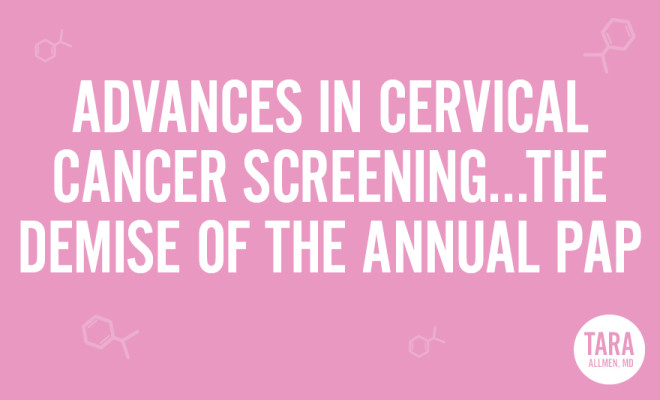
Cervical Cancer
Advances in Cervical Cancer Screening…The Demise of the Annual PAP
January is Cervical Cancer Awareness Month, so now is the perfect time to update you on the latest guidelines for PAP testing. There is a new day dawning in the Age of Aquarius!
In the 1950’s, the PAP smear was invented to identify abnormal cervical cancer cells. It became the first screening test widely used for cancer detection. Women were taught that they needed a PAP test every year, and that became the standard of care. However, like most screening tests, the PAP was not perfect. Over the years, a lot of women tested positive for abnormal cervical cells, when, in fact, their cervical cells were actually normal. These “false alarms” led to unnecessary biopsies and surgeries.
In 1976, the cause of cervical cancer was determined to be a sexually transmitted disease called the human papilloma virus (HPV). While there are over a dozen strains, the two most common high-risk types are HPV 16 and 18.
Perhaps it will be surprise you to learn that most of us have already met the HPV virus through sexual activity. Luckily, our immune systems have taken good care to rid our bodies of the virus long before it leads to infection and cancer. There is a very long lag time between cervical HPV infection and cancer. We are talking about ten years! And that is why the PAP testing guidelines have recently been revised.
The new guidelines apply to women starting at the age of 21. That is when young women should begin PAP testing. If it is normal, the PAP interval can extend to every 3 years. Once you hit 30, HPV testing is added to the mix. This is called co-testing with both a PAP and an HPV test. If your co-testing is normal, you can extend your screening interval to every 5 years. When you turn 65, you will no longer need cervical cancer screening. You are a graduate. Congratulations!
By the way, these new guidelines do not apply to women who have had an abnormal PAP or HPV test. You will have to get additional testing until your screening is normal again. Then you can get back on the low-risk cervical cancer screening guideline bandwagon.
For all of you with young daughters, the HPV vaccine is very effective in preventing infection from the high-risk HPV 16/18 virus. It is important to get this vaccination prior to sexually activity. So please talk to your pediatrician about this important prevention strategy when your daughters become tween-agers.
To review the current cervical cancer screening guidelines, please click (here).










You must be logged in to post a comment Login